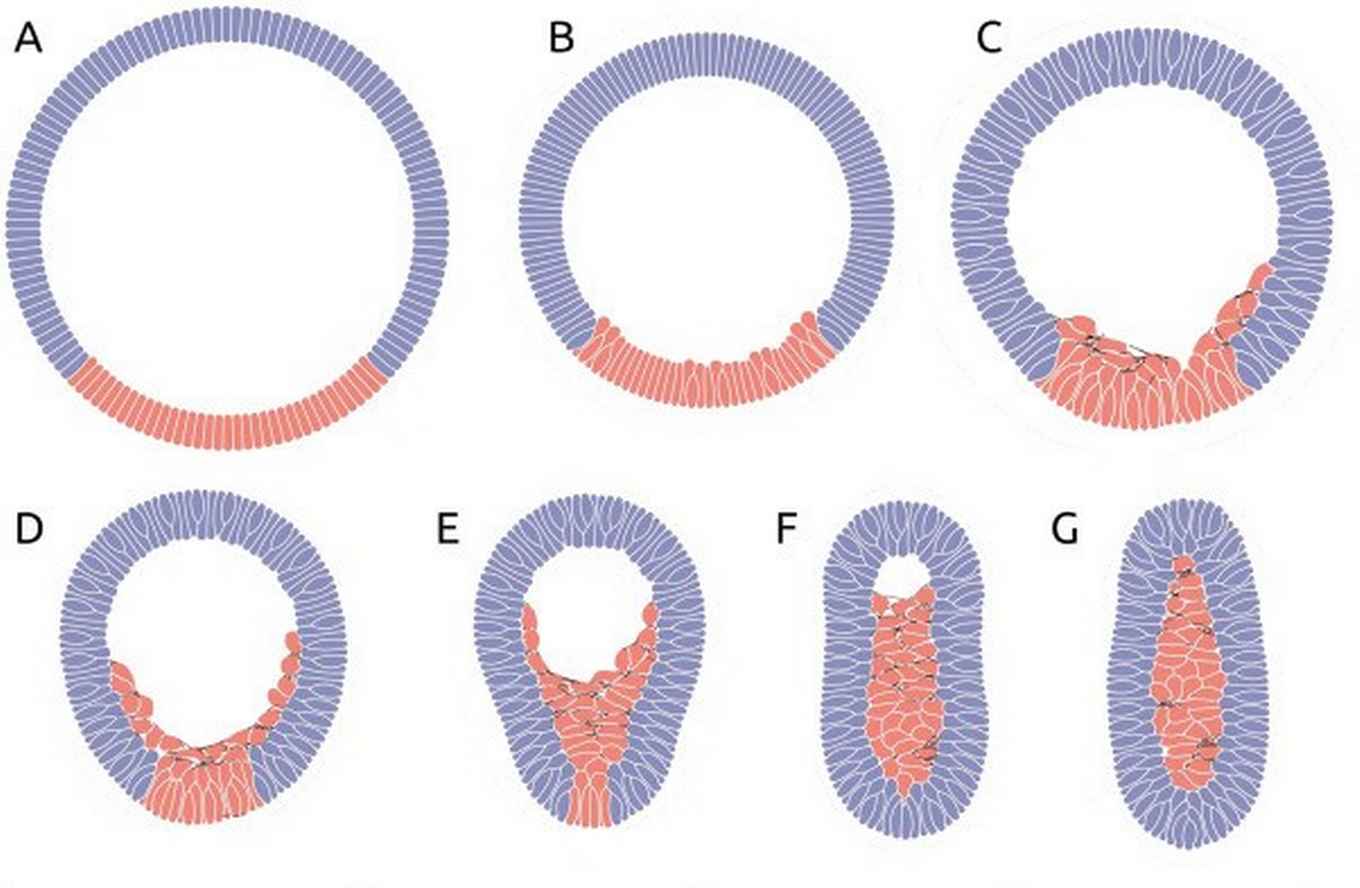Computer model describes essential step of embryonic development
14 January 2020

Many biologists regard gastrulation as the most important step in the developmental biology of animals. If something goes wrong during gastrulation, the entire development of an embryo is disrupted. Moreover, it is a process that takes place in the exact same way in many different animals; about five different gastrulation mechanisms are known throughout the animal kingdom.
Cnidaria
Kaandorp’s team decided to model gastrulation in Cnidaria, as these are among the most simply built animals on earth. Cnidaria is a collective name for marine animals such as jellyfish, sea anemones and corals. Since these animals are at the evolutionary base of the animal kingdom, the study of embryonic mechanisms in them can provide new fundamental insights into both developmental biology and the evolution of the animal kingdom. In addition to Kaandorp and Van der Sande, researchers from Lomonosov Moscow State University (Yulia Kraus) and Sorbonne University (Evelyn Houliston) were also involved in the project.
Multiple types
In their publication the scientists show that they can run simulations of different types of gastrulation using their model. It can simulate gastrulation by indentation (officially called invagination; this occurs during the development of some sea anemones and tunicates) and gastrulation by migration of cells (ingression; this is is found in, amongst others, a number of Cnidaria and in vertebrates). It is also suitable to describe a type of gastrulation that is a combination of ingression and invagination (as occurs in some sea anemones).
Technology from game computers
Although the model is based on relatively simple biomechanical rules, they are rather heavy computational calculations. To limit the time it takes to run the simulations, the computational biologists have used GPU (graphics processing unit) computing. This is a technique that is normally used in for example gaming computers.
With the simulation model, the shape of the embryo but also the shape of the individual cells that make up the embryo at that time can be predicted in detail for each step during the gastrulation. In addition, the researchers have succeeded in predicting the effect of a number of knock-down experiments on the shape of the embryo with their models. In knock-down experiments, genes in the cells of the embryo are switched off to see how this influences the development of the embryo.
Publication details:
Van der Sande et al, A cell-based boundary model of gastrulation by unipolar ingression in the hydrozoan cnidarian Clytia hemisphaerica, in: Developmental Biology, jan 2020, DOI: https://doi.org/10.1016/j.ydbio.2019.12.012